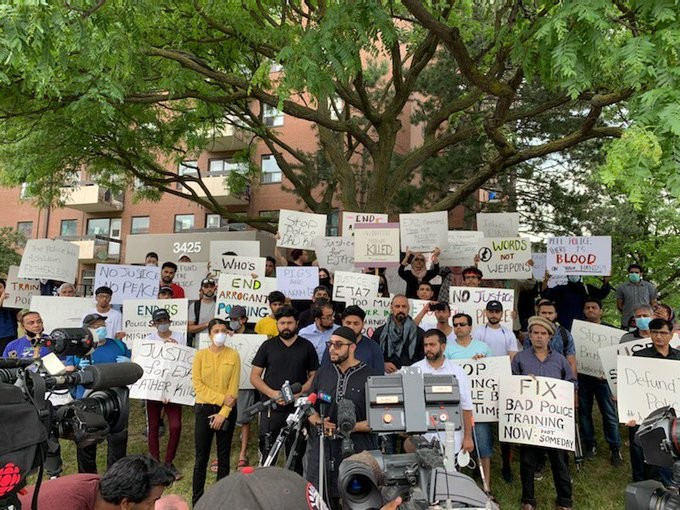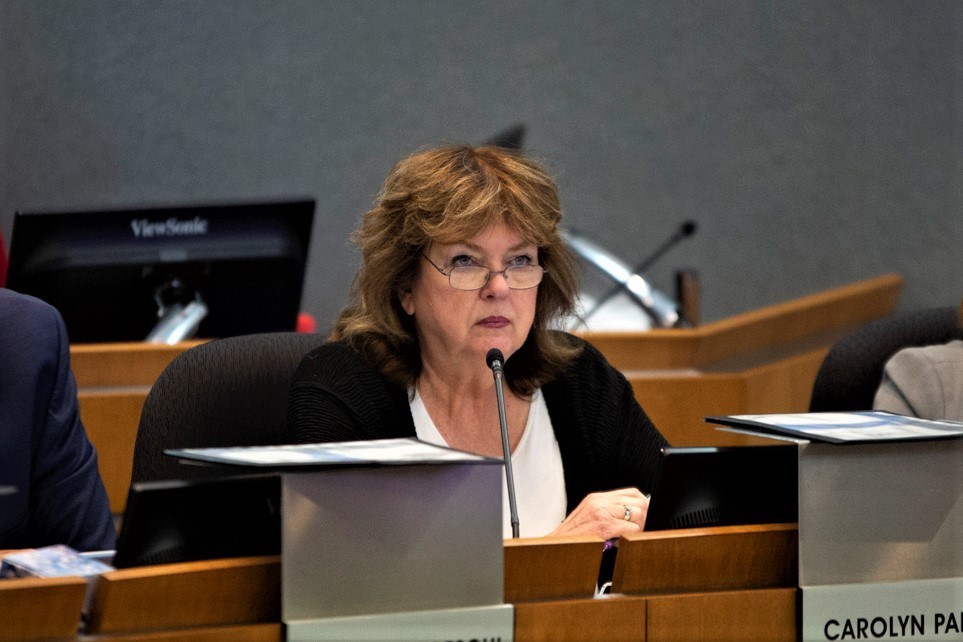
Violent youth crime drops to its lowest point in years and a new Malton hub hopes to continue the trend
Malton is a melting pot of cultures. Immigrants from all over the world have set up new lives in an extremely diverse and relatively tight-knit community.
In many ways, Malton holds all the ingredients for a successful neighbourhood. Safe. Diverse. Welcoming.
The 2016 Census figures show 59 percent of Malton’s residents were born outside of Canada, with a population of 22,835 at the time.
But this wide range of cultures and voices is rarely why Malton makes headlines.

Located in the far flung north east of Mississauga and cut off from the rest of the city by the hulking presence of Toronto Pearson Airport, it has problems too. Because the majority of its residents are new to Canada, many have to struggle with issues such as housing and precarious employment.
The economic reality and its close proximity to other areas of the GTA where organized crime has settled in, has in recent years created waves of gang violence that have hit Malton.
Other high-profile incidents have contributed to the negative attention the area has received.
Many across Ontario have only heard of Malton for its troubles with violence. Most recently, the police shooting of 62-year old Ejaz Choudry, while he was experiencing a mental health crisis in his Malton apartment, captured national attention. Before that the area made the news across Canada after the death of 17-year-old bystander Jonathan Davis, shot down in a gang-style hail of bullets in September that left five others wounded.

A rally held following the death of Ejaz Choudry in Malton last month.
Davis’s death in particular sparked a heated political debate among federal party leaders about gun crime in the run-up to the October election. The Conservatives promised to get tough on prison sentences for gang members and the Liberals pledged funding to help GTA police deal with gun violence.
But crime can be a cyclical problem.
For many young people in places like Malton, harsher prison sentences or additional police funding come too late. According to the Ministry of the Solicitor General, the rate of convicts reoffending in 2015/16 (the most recent data shared) was 37 percent, with more than a third of those who had served a jail sentence of at least six months back inside within 24 months of their initial release.
Convictions for young people can be the start of a downward spiral, dragging them off course at a tender age. An initial conviction for petty theft or an assault has the potential to lead to a revolving door of future offences.
In an effort to quash this cycle before it begins, outreach and engagement with the region’s youth is a key area of focus for the Peel Regional Police. This is a crucial effort as the region, including Caledon, has the highest percentage of those aged 0-14 in the Greater Toronto Area. Both Brampton and Mississauga are home to approximately 120,000 residents within this age group, meaning that in the years to come, Peel police will continue to have a large proportion of its patrol population falling into this “youth” category, aged 12-17.
In 2019, the region’s police force and youth charities saw their labour bear fruit, as youth crime dropped. In all categories (except for driving offences) the number of youth crime charges was down year-over-year.
Despite the pleasing trend, crimes against persons (which includes assault) remained the most prevalent type of crime among young people.
Data from Peel Regional Police shows many forms of youth crime have dropped between 2018 and 2019.
Under the Youth Criminal Justice Act, young people are defined as those between the ages of 12 and 17. The legislation governs consequences for young people and, in theory, attempts to guide them toward rehabilitation instead of the cyclical pattern of punishment.
In 2019, crimes against persons committed by youths dropped by 27.7 percent to its lowest point in four years with 697 people charged compared to 938 in 2018. The drop puts violent youth crime at its lowest levels in Peel since 2015 and follows several consecutive years that saw the violent trend on the rise.
Speaking at the Peel Police Services Board meeting on June 26, Mississauga Mayor Bonnie Crombie voiced concern at the prevalence of youth violence, despite a largely positive trend in 2019.
Addressing the issue, Deputy Chief Nick Milinovich said that while youth crime is trending down, gangs remain a significant threat to young people in Peel.
“Generally speaking, youth crime and some of those stats you see are declining, but what’s concerning is the type of crime,” he explained during the virtual meeting of the board. “I can tell you I was shocked by [gang crime in Peel], the other thing that also shocked me was the age of some of the people who were involved. It’s not only shocking, but sad to see we’re losing some of our youth to those types of things.”
Despite the decline in youth crime rates overall, the more violent types of crime committed by young people in the region remains a concern for Peel police.
The number of crimes against property (including fraud, mischief and arson) also dropped by a similar amount compared to 2018. Last year, charges fell by 134 cases to 378, a five year low, representing a fairly consistent downward trend.
Crimes against property, which includes a slew of more minor offenses, is an area police zero in on for rehabilitation instead of conviction. Officers are encouraged to refer young people to educational and development opportunities instead of pushing for fines, community service or prison sentences.
In Peel, the Pre-Charge Diversion Program directs young people to educational programs and resources instead of pressing charges that could result in a criminal record, something that has been shown to impact future schooling and career opportunities.
In 2019, as charges for crimes against property dropped, referrals to this program increased 18 percent to more than 500 young people.
“The Pre-charge Diversion Program enabled 532 young people to have a second chance to learn from their mistakes, instead of exposing them to our criminal justice system,” the Peel Police report states.
This program has led to a consistent reduction in the number of youth charged by Peel police in recent years.
Numbers from the Peel police 2018 annual report show that, overall, young offenders accounted for 11.5 percent of people charged by Peel police that year, down from about 14 percent in 2017. In 2019, youth accounted for 8.6 percent of those charged by Peel police.
Diverting young people caught committing minor offences towards helpful resources is an important step, creating conditions to elevate and empower them further in the first place and keep them away from the criminal justice system. Peel Regional Police also increased investment last year into its Youth in Policing program to connect more youth with officers in Peel. All of these programs are aimed at providing empowering opportunities and places to learn for Peel’s younger generations.
Many visible minority youth face a wide range of challenges that can push some toward gang culture. A recent provincial investigation of Peel District School Board found widespread racism and other forms of discrimination within the troubled system. Data showed that Black students in particular are unfairly treated, suspended without proper reason and removed from educational “streams” that lead to future opportunities. A board whose educators are overwhelmingly white, has been shown to apply a range of biases against Black students, and others who don’t look like their teachers and principals.
These systemic barriers that cut off opportunities, remove young people from the types of institutions meant to help them develop and create a sense of helplessness, can lead some to gang life. A range of disadvantaging social and economic forces also push up against many young people, who often have few supports to help them navigate conditions that many in society never experience.
In Malton, a plan to create a space dedicated to the vision of youth empowerment has been in the works for several years.
The local councillor, Ward 5’s Carolyn Parrish, is pushing to build a unique youth hub. Rather than a traditional community centre, shared between all generations, with slightly patronizing labels such as “at risk,” youth, Parrish has envisaged a clubhouse for young people in Malton to create music, art and socialize with access to nutritious food. It is hoped the space will offer an alternative to some of the allure petty theft or gang culture can create in the face of teenage boredom and disillusionment, and the lack of opportunity.
“Because it's full of seniors, the kids don’t go there,” Parrish said, of Malton’s existing community centre. “You put a big sign to young people [saying] ‘Do not enter,’ if you put a senior in the doorway. I think kids want their own space.”
To that end, the renovation of a disused former swimming pool building attached to Lincoln Alexander School will be complete between 2021 and 2022, using a mix of regional and city funds.

Mississauga Councillor Carolyn Parrish
“You’re going to have a lot of kids from the age of 12 until the end of high school who have no place to go after school,” Parrish explained. “You also have a lot of kids who have no breakfast and no lunch… you can go in there [the hub], open the fridge, get a sandwich… they’re not singled out as kids who need help, they’ve just wandered in there to listen to music.”
In concept, the centre will bridge the gap between young people and the resources they need, while also offering activities and a space to relax. Downstairs, there are plans for a music studio and a stage hopefully decked out with some professional features. Parrish says many young people in Malton are drawn to music, as an outlet and form of expression.
Upstairs, small offices will be staffed by health workers, career advisors and various other services. For those who need to access them, they’re there. For the children who just want to hang out, there will be no pressure to visit them.
The hub fits into a call by the Centre for Addiction and Mental Health (CAMH) made in 2006 to treat youth violence as a public health issue. Instead of arresting and charging young people for crimes, the model would apply a health lens to the issue, pouring resources into projects like the hub instead of policing. This “upstream” approach is exactly what is being demanded by supporters of the “defund” the police movement, which has been pushing for public funds to be redirected from police budgets into programs that help build and support healthy communities.
It’s an approach that believes in preventing crime before it ever happens.
Attacking the wide range of root causes, most of which are interconnected, is a huge undertaking. The harm done by PDSB, for example, is hard to qualify, but it’s clear from the province’s data that even the educational system has contributed to the conditions that push many young people away from positive opportunities.
Queen’s Park has since taken over the school board, in hopes of ending its history of harm against many racialized students, which it admitted to after the provincial investigation.
For many in need of support, success for Malton’s hub after it opens could provide a model and allow youth violence to be approached differently across Ontario: paying attention to problems before they ever result in negative outcomes.
If it serves its planned purpose, to steer young people who are too often marginalized onto enriching paths, the annual youth crimes statistics in Peel could continue to trend in the right direction.
Email: [email protected]
Twitter: @isaaccallan
Tel: 647 561-4879
COVID-19 is impacting all Canadians. At a time when vital public information is needed by everyone, The Pointer has taken down our paywall on all stories relating to the pandemic and those of public interest to ensure every resident of Brampton and Mississauga has access to the facts. For those who are able, we encourage you to consider a subscription. This will help us report on important public interest issues the community needs to know about now more than ever. You can register for a 30-day free trial HERE. Thereafter, The Pointer will charge $10 a month and you can cancel any time right on the website. Thank you.
Submit a correction about this story


